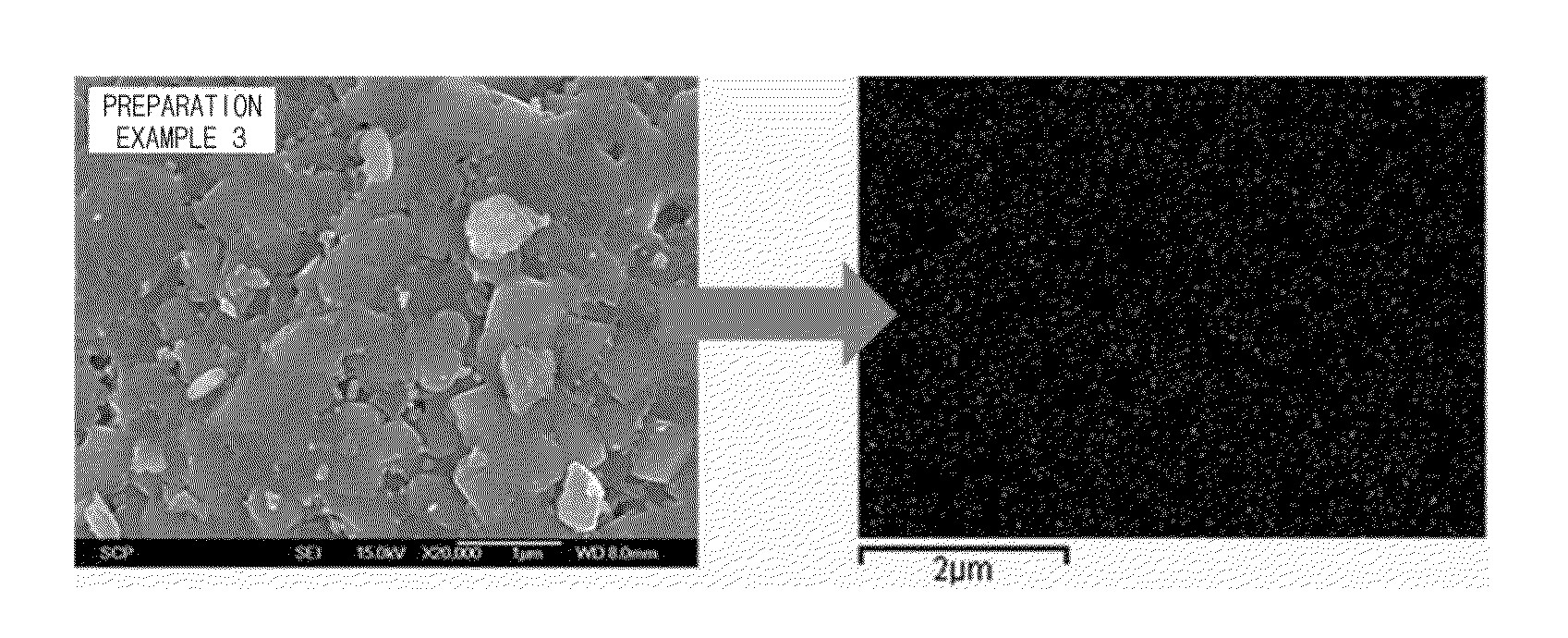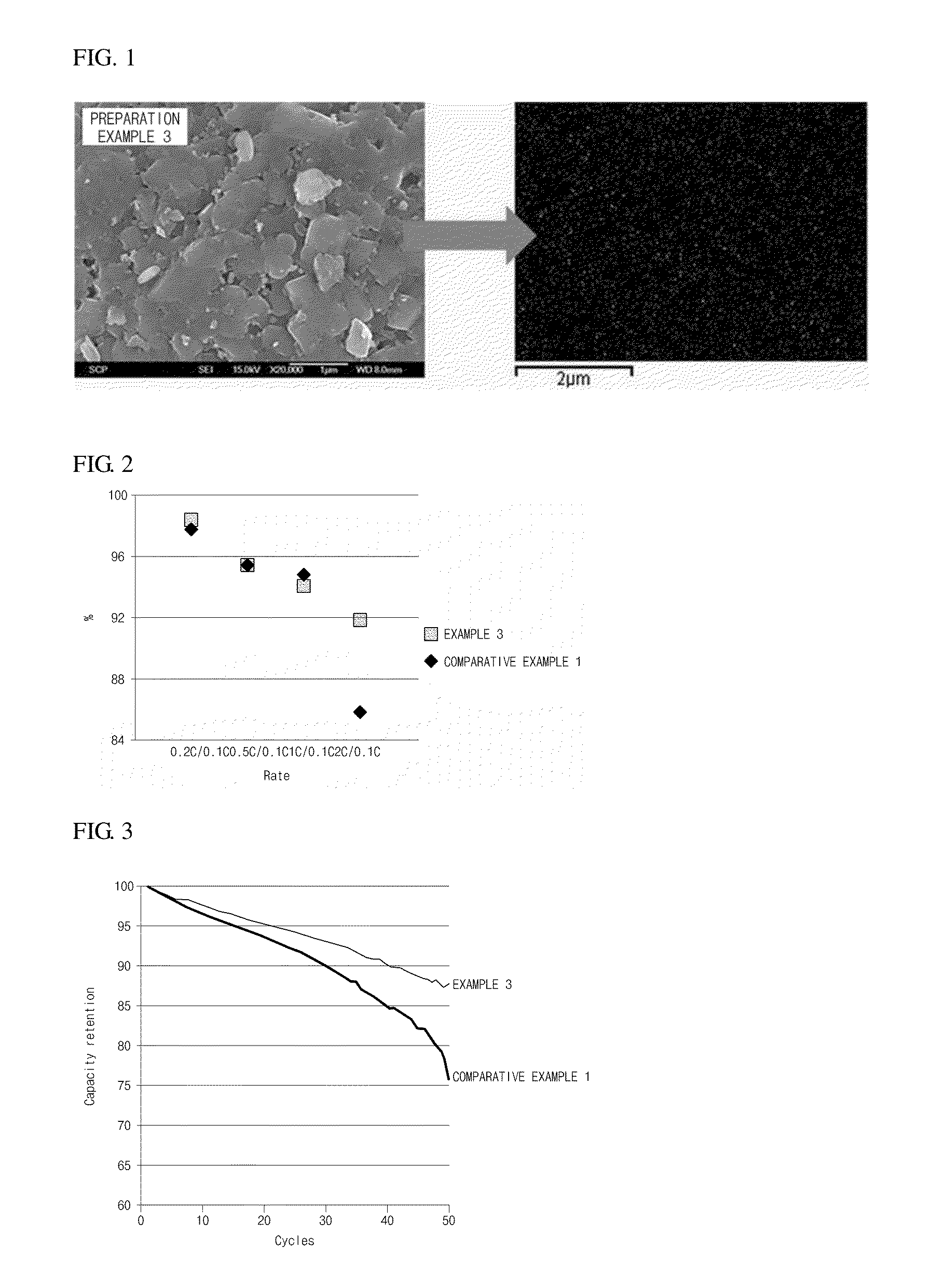Positive electrode active material, method of preparing positive electrode active material, and lithium secondary battery using positive electrode active material
- Summary
- Abstract
- Description
- Claims
- Application Information
AI Technical Summary
Benefits of technology
Problems solved by technology
Method used
Image
Examples
preparation examples 1 to 6
[0054]Indium oxide (In2O3, about 100 nm) was mixed with ethyl alcohol for 1 hour to prepare a coating solution. Contents of a positive electrode active material were controlled to obtain contents of indium oxide coating on 0.82LiNi0.58Co0.20Mn0.22O2.0.18Li2MnO3 as described in Table 1, and added to the coating solution and stirred for 6 hours. Next, the mixtures were dried in an oven at 100° C. for 12 hours to obtain powders. The powders were put in an electric furnace and heat treated at 650° C. (heating rate of 2° C. / min) for 12 hours. The prepared positive electrode active materials were observed by a scanning electron microscope (SEM) and energy dispersive spectroscopy (EDS) mapping to identify uniformity of the coatings. Results of SEM and EDS mapping for the positive electrode active material of Example 3 are illustrated in FIG. 1.
TABLE 1Preparation Example123456Content of indium0.10.20.5124oxide coating (%)
examples 1 to 6
[0055]Each positive electrode active material of Preparation Examples 1 to 6, a Super-P conductive agent, and a 6% polyvinylidene fluoride (PVDF) binder (in N-methyl-2-pyrrolidone (NMP)) were mixed and then casted on a thin aluminum plate when an appropriate viscosity was obtained. The thin aluminum plate was dried and then pressed to prepare an electrode. At this time, contents of the indium-coated positive electrode active material and the conductive agent were controlled to be 92 wt % and 4 wt %, respectively. Coin cells were prepared by using the prepared electrodes and according to a typically known method and a battery configuration.
[0056]Changes in discharge capacity and rate characteristics according to a cycle were measured by using a battery testing system. The results thereof are presented in Table 2 and FIGS. 2 and 3.
[0057]Also, the prepared battery of Example 3 was charged and its positive electrode was then collected to measure thermal stability of the positive electro...
PUM
 Login to View More
Login to View More Abstract
Description
Claims
Application Information
 Login to View More
Login to View More - R&D Engineer
- R&D Manager
- IP Professional
- Industry Leading Data Capabilities
- Powerful AI technology
- Patent DNA Extraction
Browse by: Latest US Patents, China's latest patents, Technical Efficacy Thesaurus, Application Domain, Technology Topic, Popular Technical Reports.
© 2024 PatSnap. All rights reserved.Legal|Privacy policy|Modern Slavery Act Transparency Statement|Sitemap|About US| Contact US: help@patsnap.com










